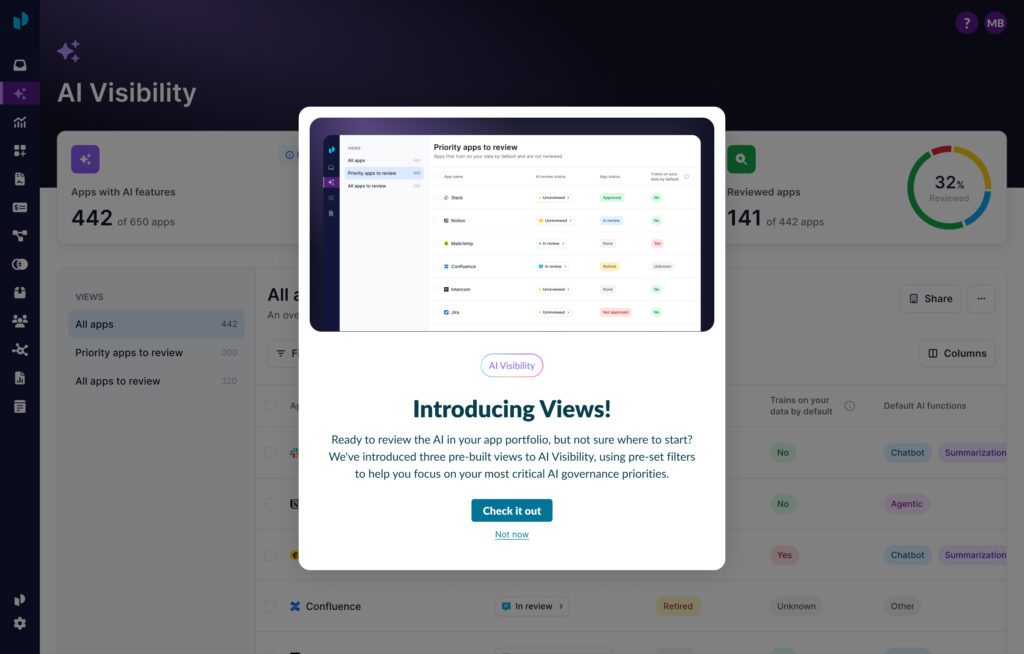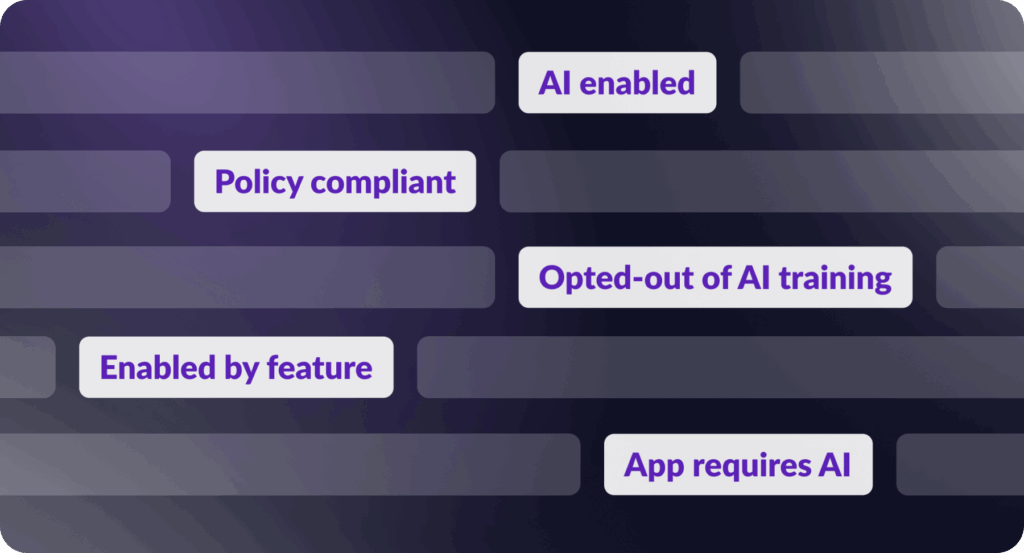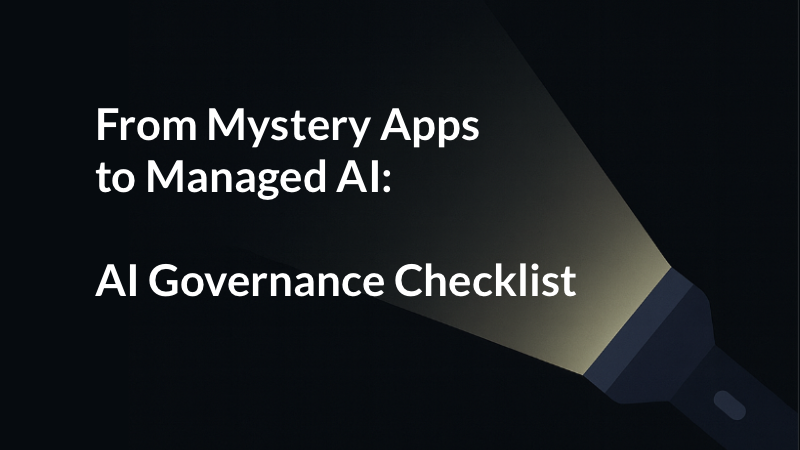
14 LLM Prompts to Jumpstart Your AI Governance Framework
“What’s this? Another brazenly LLM generated blog post? If it’s any good it’ll end up in my Perplexity results. Next!”
—You, probably.
But wait! This isn’t AI. I’m a person and my name is Rob! I wouldn’t even know HOW to generate AI Slop. Or would I? No, I wouldn’t. Would I?
Look, I’d be skeptical if I were you. But I assure you this is certified AI-free, organic, locally sourced, free range content. I have acres of land to roam with other cyber security writers, uncaged and fancy-free. I get to write blog posts all day and I couldn’t be happier. And today, I’m writing about AI Governance. If you’re anything like the CIOs I’ve been speaking with, you’re about to kick off an AI Council and put together a framework that balances AI risk & reward. But before you can expect your AI Council to have any meaningful output, you’re going to need a lay of the land.
The AI Council Has Entered the Chat
At this point, AI Governance isn’t a side project, it’s a board-level mandate. And that usually means one thing: more meetings.
The AI Council assembles. Legal, IT, HR, and Security join the call. You spend 5-8 minutes making idle small talk about your weekends. And then what? Where do you even start?
With AI, of course.
Head to your favorite large language model (ChatGPT for quick reference, Claude for structured output, Perplexity for deep research) and let AI help you scope the challenge. It won’t hand you a finished policy, but it will help you wrap your head around the scope of your AI management problem and start building a framework that scales.
Below are 11 prompts to kickstart your AI governance strategy and turn “we should probably do something about AI” into the bones of an actual plan. I’ve bracketed where you’ll need to plug in some relevant company details. Keep your PII to yourself, please.
🧩 Prompts for Mapping Your AI Landscape
First, let’s get a look under the hood to see what you’re dealing with. An LLM can rattle off common trouble areas, allowing you to start generating a list of places that need investigation and attention.
- List every place in a [company-size] where AI might already exist. Examples include SaaS tools (Salesforce Einstein, Notion AI) or used independently by employees (ChatGPT, GitHub Copilot). Sort them by risk exposure.
- Create a table that distinguishes examples of sanctioned AI, tolerated AI, and unsanctioned AI. Include compliance and security implications for each category.
- Draft a discovery process for identifying Shadow AI usage across departments.
🔐 Prompts for Classifying Shadow AI Risk
Next, start thinking about risk tolerance. This will vary wildly depending on company size, industry, et cetera. Your friends in legal are going to love this bit.
- Build a 3-tier AI risk scoring model based on data sensitivity, autonomy level, and regulatory exposure.
- Summarize examples of high-risk AI usage under U.S. data privacy laws and internal compliance frameworks.
- Create a decision matrix that maps AI use cases to appropriate control levels.
💡 Think: tiered triage. Not every AI experiment needs a legal review, but you should know which ones do.
🧭 Prompts for Building an AI Governance Framework
Time to talk turkey. Now that you know the tools to look out for, and the level of risk you can sustain, let’s start putting it together.
- Outline a lightweight AI governance framework that balances innovation and compliance.
- Draft an approval workflow for evaluating new AI tools. Include role-specific needs from IT, Legal, and Security.
- Generate a checklist of policy components every AI governance framework should include (ownership, risk scoring, monitoring cadence, documentation).
💡 You’re not writing a constitution here. Start small, prove it works, scale later.
💬 Prompts for Policy & Communication
How is AI policy different than my toddler’s favorite bite-sized snacks? Well, because it doesn’t exist inside a vacuum. Let’s be thoughtful about how we bring along the greater org.
- Generate an internal announcement that introduces our new AI governance policy in a way that doesn’t terrify employees.
- Draft three short training tips for employees about safe prompt design and data boundaries.
- Create a 5-question quiz to test employee AI literacy as it is applied to [my industry]
💡 If your policy rollout makes people feel like they’re about to be arrested for using ChatGPT, you’ve missed the point.
🚀 Prompts for Finding Strategic Opportunities
“Governance” doesn’t have to mean “fun stopper”. The reward side of the balance equation deserves your input, too.
- List 10 areas where responsible AI adoption could create measurable business impact (include KPIs).
- Outline a quarterly review cadence that ties AI usage back to business outcomes.
💡 AI governance isn’t just about control. It’s about making sure your AI investments actually work for the business.
🧠 Governance That Doesn’t Feel Like Homework
These prompts won’t replace your legal review or compliance framework, but they will help you start the conversation.
When your CEO pings you at 9:12 p.m. asking “what’s our AI policy?”, you’ll have something more strategic to share than a shrug and a Google Doc.
AI Governance is no longer optional. The sooner you build your framework, the sooner your organization can innovate responsibly and your CIO can sleep at night.
⚙️ Next Step: Turn Your Prompts into Policy
If you’re ready to move from brainstorming to implementation, download our AI Governance Implementation Checklist.
It breaks your governance journey into seven actionable pillars, from visibility and inventory to risk classification, approval workflows, and documentation.
About Productiv:
Productiv is the IT operating system to manage your entire SaaS and AI ecosystem. It centralizes visibility into your tech stack, so CIOs and IT leaders can confidently set strategy, optimize renewals, and empower employees.






